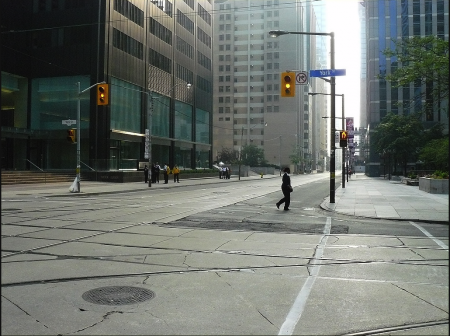Toronto - Were stand-down orders given to police when protesters were using Black Bloc tactics during the G20?
Did senior police officers lie to the Office of the Independent Police Review Director (OIPRD)?
Was there a coordinated attempt to deny information to the OIPRD by Toronto Police Services?
These and other questions have been raised by the report issued last month by the Office of the Independent Police Review Director in relation to police actions during the G20. The report was a scathing review of police conduct and planning and lead to charges against 45 officers under the Police Services Act.
The report outlines a number of instances of police misconduct including illegal detainment, unreasonable, unnecessary and unlawful arrest, excessive use of force and mass breaches of the Charter rights of protesters. It also names names, singling out misconduct and troubling comments by senior police officers Fenton, Farrar and Ruffolo.
But the report also leaves a number of issues unresolved, and in some instances goes out of its way to draw attention to inconsistencies and missing information.
Burning Cars
The report has an extremely detailed section devoted to the four cars left at the intersection of Bay and King streets. All four cars were burned. Many pundits and activists have asked why the cars were left there and why police chose not to stop the movement of Black Bloc protesters, given the thousands of officers present in the downtown core.
The OIPRD report devotes a significant amount of space to discussing the detailed movement of these cars beforehand down to the second.
Maps of the protest show that the protesters engaging in Black Bloc tactics and causing property destruction were the only groups who were able to go South of Richmond St. during the protest without meeting a heavy police line.
Deputy Warr (the highest ranking officer under Chief Blair) stated that he felt the cars were responding to a call for assistance just announced, even though the call went out for Public Order officers, not the officers who showed up. "They were the Rapid Response team for other things. They hadn't been directed down there by the Incident Commander, they responded to that general call."
But the OIPIRD report takes pains to clearly outline the position of officers at the intersection. Officers arrive from both the East and South of the intersection, but for some reason they leave the South undefended.
"The CCTV camera did not show any police on Bay Street south of King to Wellington where the interdiction zone (G20 meeting) and the perimeter fence were."
As Black Bloc and other protesters eventually moved to Yonge street after the cars began burning, a number of storefronts were smashed. Yet strangely, three minutes after they began doing so, Incident Command ordered all officers off Yonge Street.
Why?
Stand Down Orders?
According to Night Incident Commander Fenton (now being charged under the Police Services Act), he asked a similar question to Day Incident Commander Ferguson: "I asked…how the situation could have developed…and why we had not been making arrests - or words to that effect. Superintendent Ferguson responded by shaking his head and saying words to the effect of 'I tried, but I could not get the public order to move.' I inquired what he meant by that, and he responded 'I asked them to move and I was told that they couldn't.'"
Why did police, who numbered in the thousands, not choose to kettle or arrest protesters using the Black Bloc tactic as they did with everyone else later on in the evening and the next day?
The Toronto Media Co-op asked Gerry McNeilly, the Independent Police Review Director (the person who wrote the report).
TMC: Was there an order to stand down from police against the Black Bloc protesters?
Gerry McNeilly: "I couldn't tell you if there was an order or not…no one could confirm or deny whether an order was given."
TMC: Did you ask?
GM: "I asked that question, yes."
While the lack of clarity may cause some to draw specific conclusions about a conspiracy, it would be unwise to do so. It is not clear why protesters were able to move South at Wellington, and then up Yonge street, unhindered. It may have been poor planning, bad communication, movement problems with the Public Order Units (riot police) or quick thinking on by demonstrators.
But it would be equally unwise to assume immediately that no such conspiracy exists. After all, the OIPRD did ask and was unable to confirm or deny either way.
